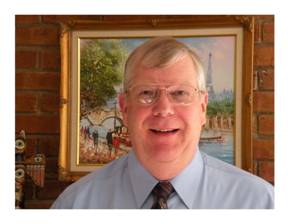If you are wondering who John Irwin is, you can pull down my current publication list here. In the following paragraphs are some thoughts I have on the current situation in air pollution modeling (alternatively known as atmospheric transport and diffusion modeling). In 1974 I started work with the United States Environmental Protection Agency in their Meteorology Division. I retired in 2004. |
|
When I joined the Meteorology Division, I had the great pleasure of being trained in air pollution modeling by D. Bruce Turner until he retired from government service in 1989. There were no operational regional-scale models in 1974, and my focus was on the commonly used local-scale transport and dispersion models used to show whether new and existing power production facilities would violate clean air standards. These models were Gaussian plume models.
In my pursuit of ways to provide better predictions than those available with the Pasquill-Gifford-Turner Gaussian plume models, it became increasingly clear to me that most users of these models do not fully appreciate how much variability is not being simulated by these models and their more modern offspring (e.g., HPDM, ADMS, AERMOD). They wrongly presume the model predictions will be close to that observed (say within 5-10%). It never dawns on them that differences between what is hourly observed may differ by a factor of two (or more in complex situations) from that predicted by a model. (A ‘factor-of-two’ difference means that if the model estimates a value of 10, the observed value is somewhere between 5 and 20.)
To further complicate the matter, most papers on model evaluation directly challenge the models to be in accord with what is observed, never suspecting or accounting for the fact that hourly concentration values are highly chaotic.
My imperfect analogy to describe this situation is assume we are looking at the outcome of tossing a pair of dice. We know that the average of many tosses will be close to seven (7), but any one toss can range from 2 to 12. Continuing the analogy, current Gaussian plume models predict what is to be seen on average for each hour, when in fact variations about the predicted hourly average of a factor of 2 (from 3.5 to 14, if 7 is the expected average) are easily expected.
It is my hope that future transport and diffusion models will predict the distribution of possible outcomes for each hour. Even if this does not happen, new model evaluation methods need to be developed that address the fact that models only simulate a small portion of the possible variations to be seen in hourly concentration values.
John Irwin passed away in August 2016.
Links to obituaries:
Obituary from EM Magazine | Obituary on legacy.com




